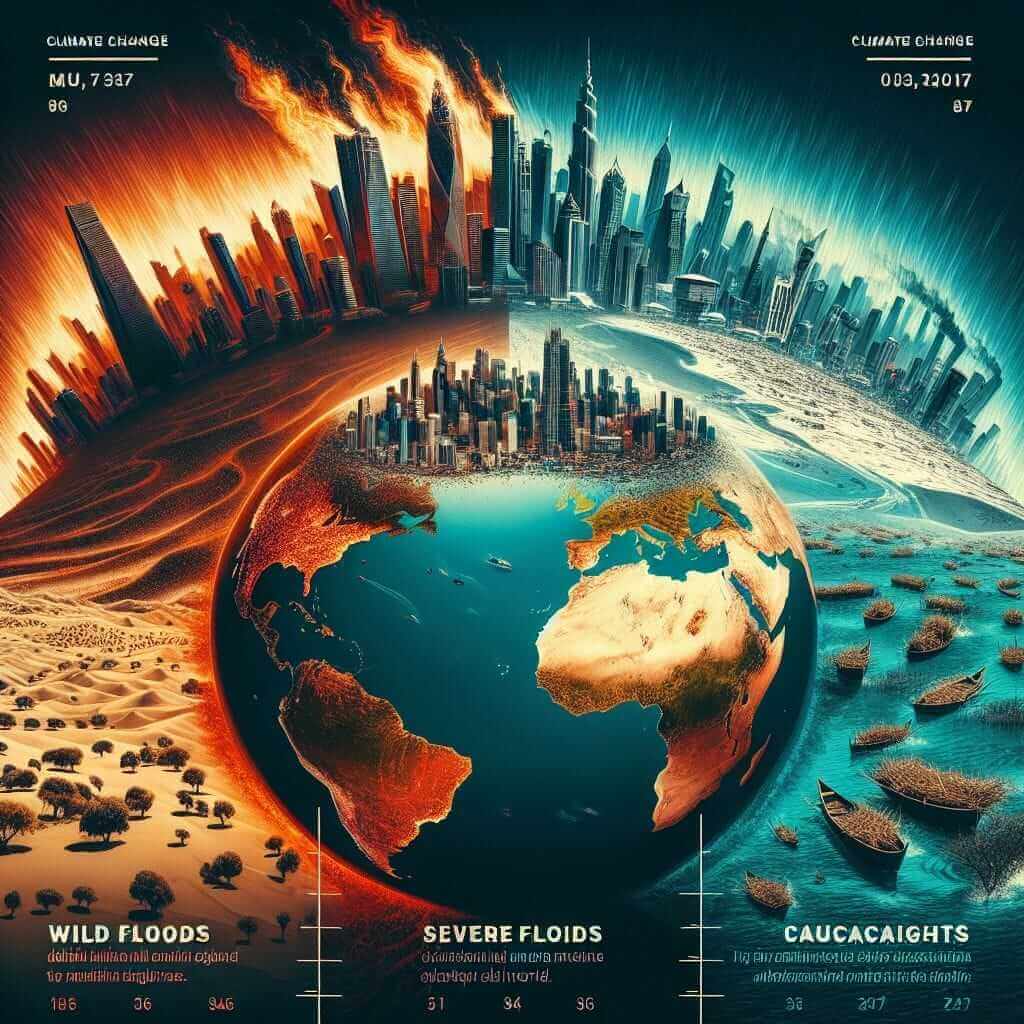Climate change is a critical issue in today’s world, influencing diverse aspects of life including weather patterns. Understanding its effects not only broadens your knowledge but can also prepare you for the IELTS Reading test, where this topic is quite common. This article will provide a detailed IELTS Reading practice based on the effects of climate change on weather patterns, drawing from past trends and predicting the relevance of this topic in future exams.
IELTS Reading Practice Test
Reading Passage
The Effects of Climate Change on Weather Patterns
Climate change refers to long-term changes in temperature, precipitation, and other atmospheric conditions. It is largely driven by human activities, particularly the emission of greenhouse gases. Climate change impacts weather patterns significantly, leading to observable changes that affect ecosystems and human societies alike.
One of the most notable effects of climate change is the increase in temperature. Over the past century, global temperatures have risen by approximately 1.2°C. This rise has not been uniform; some regions experience more intense warming than others. For instance, the Arctic is warming at twice the global average rate. Warmer temperatures influence weather patterns, causing more frequent and intense heatwaves. Heatwaves can lead to severe health issues, increased energy consumption for cooling, and strains on water resources.
Precipitation patterns are also altering due to climate change. While some regions are becoming wetter, others are experiencing prolonged droughts. This variability in precipitation affects agricultural productivity, water supply, and increases the risk of extreme events like floods and droughts. For example, Southeast Asia is witnessing heavier monsoon rains, whereas the Mediterranean region is encountering prolonged dry spells.

Another impact of climate change on weather patterns is the increase in frequency and intensity of extreme weather events. Hurricanes, typhoons, and tornadoes are becoming more powerful and destructive. The warming atmosphere holds more moisture, which fuels these storms and increases their potency. In 2020, the Atlantic hurricane season was the most active on record, with 30 named storms devastating many areas.
Additionally, climate change affects the natural oscillations in climate systems, such as the El Niño-Southern Oscillation (ENSO). These oscillations bring about cyclical but significant changes in weather patterns across the globe, influencing rainfall, temperature, and storm activities.
In conclusion, the effects of climate change on weather patterns are profound and varied. Rising temperatures, altered precipitation patterns, and more frequent extreme weather events are just some of the challenges we face. Understanding these changes is crucial for developing strategies to mitigate and adapt to the impacts of climate change.
Questions
Multiple Choice:
-
According to the passage, which region is warming at twice the global average rate?
A. Southeast Asia
B. Mediterranean
C. Arctic
D. Atlantic -
What is one consequence of more frequent heatwaves mentioned in the passage?
A. Decreased energy consumption
B. Increased agricultural productivity
C. Strains on water resources
D. Decreased risk of floods
True/False/Not Given:
-
Climate change has led to more uniform global temperatures.
A. True
B. False
C. Not Given -
The Atlantic hurricane season of 2020 was notably inactive.
A. True
B. False
C. Not Given
Matching Information:
-
Match the locations with their respective climate change effects:
- Southeast Asia
- Mediterranean
Effects:
A. Prolonged dry spells
B. Heavier monsoon rains
Answer Keys
Multiple Choice:
- C (Arctic)
- C (Strains on water resources)
True/False/Not Given:
- B (False)
- B (False)
Matching Information:
-
- Southeast Asia: B (Heavier monsoon rains)
- Mediterranean: A (Prolonged dry spells)
Common Mistakes
- Misreading details: Pay careful attention to specific data points and regions mentioned.
- Overlooking the question type: Differentiate whether the question asks for identifying specific information or an overall understanding.
- Matching incorrectly: Ensure you fully understand the effects described before matching them to locations.
Vocabulary
- Greenhouse gases (n.) /ˈɡriːnˌhaʊs ˈɡæsɪz/: Gases that trap heat in the atmosphere.
- Heatwaves (n.) /ˈhiːtˌweɪvz/: Prolonged periods of excessively hot weather.
- Droughts (n.) /draʊts/: Long periods with insufficient rainfall.
- Oscillations (n.) /ˌɒsɪˈleɪʃənz/: Fluctuations in temperature or precipitation.
Grammar Focus
- Past Participle in Passive Voice: “is driven by human activities” shows the action done by humans.
- Present Perfect Tense: “have risen” indicates an action that started in the past and continues into the present.
Advice for High IELTS Reading Scores
- Practice regularly: Familiarize yourself with various topics, including climate change.
- Time management: Allocate specific time slots for each section to ensure completion.
- Skimming and scanning: Efficiently locate key information without reading every word in detail.
- Understand question types: Be clear on what each type of question requires, whether it’s multiple-choice or matching information.
By understanding the effects of climate change on weather patterns and practicing with realistic IELTS reading passages, you can enhance your reading skills and perform better in the actual IELTS exam.